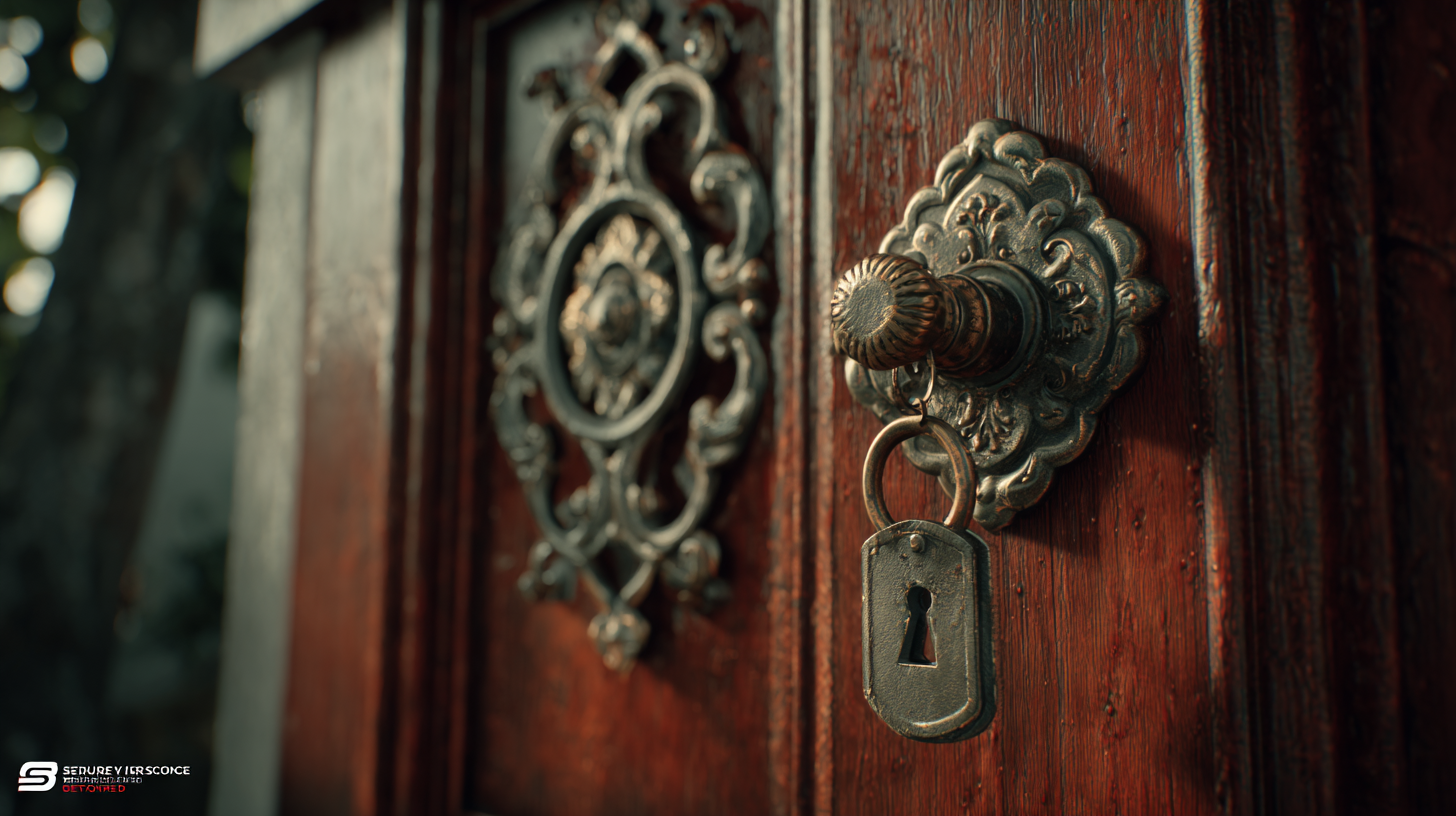
Securing Your Best House Door with Industry Export Certification Insights
In today's ever-evolving security landscape, ensuring that your house door meets the highest standards of protection is paramount. With more than 75% of residential break-ins occurring through the front door, according to the Bureau of Justice Statistics, the importance of investing in a certified house door cannot be overstated. Industry export certifications, such as those from Underwriters Laboratories (UL) and the American National Standards Institute (ANSI), provide critical insights into product quality and reliability. These certifications not only assure homeowners of enhanced security features and durability but also align with growing consumer expectations for safety. By understanding the benefits of certified house doors, homeowners can make informed decisions that not only safeguard their property but also elevate the overall value and appeal of their homes.

Understanding Industry Export Certification for Door Security
 When it comes to securing your home, selecting the right door is just as crucial as understanding the
certifications that validate its security features. Industry export certification is an important aspect that ensures the door meets established safety standards. These certifications are not just mere labels; they signify that a product has undergone rigorous testing and complies with international safety regulations. By choosing doors with recognized export certifications, homeowners can feel more confident in their purchase, knowing that their entry points are built to withstand potential threats.
When it comes to securing your home, selecting the right door is just as crucial as understanding the
certifications that validate its security features. Industry export certification is an important aspect that ensures the door meets established safety standards. These certifications are not just mere labels; they signify that a product has undergone rigorous testing and complies with international safety regulations. By choosing doors with recognized export certifications, homeowners can feel more confident in their purchase, knowing that their entry points are built to withstand potential threats.
Moreover, navigating the world of door security can be overwhelming, especially with a plethora of options available in the market. Understanding the specifics of industry export certification enables consumers to make informed decisions. Certifications often focus on several key factors, including resistance to forced entry, durability under various environmental conditions, and overall construction quality. By familiarizing themselves with these standards, homeowners can engage with reputable manufacturers and select doors that not only enhance their property’s aesthetic appeal but also provide dependable security that lasts for years to come.
Key Features of Top-rated Secure House Doors
When it comes to securing your home, selecting the right front door is paramount. According to a recent report by the American National Standards Institute (ANSI), homes with high-security doors can reduce break-ins by up to 40%. The top-rated secure house doors are often characterized by robust materials, such as steel and fiberglass, which offer superior durability and resistance to forced entry. Moreover, features like multi-point locking systems enhance security by ensuring that multiple bolts secure the door when closed, making it significantly harder for intruders to gain access.
**Tip:** Always choose doors that meet or exceed industry standards for security; look for doors certified by the Underwriters Laboratories (UL) or the National Institute of Standards and Technology (NIST), as these certifications indicate adherence to rigorous testing.
In addition to strong materials and locking systems, the best secure house doors also incorporate smart technology. A study conducted by the Electronic Security Association (ESA) revealed that homes with smart security features are less likely to be targeted by thieves. Installing smart locks or surveillance systems can provide real-time monitoring and control, ensuring that homeowners are always aware of their property's security status.
**Tip:** Consider upgrading to a door that includes smart technology for added peace of mind and the convenience of remote access.
Key Features of Top-rated Secure House Doors
The Role of Digital Innovations in Door Security
Digital innovations are revolutionizing the way we approach door security, offering enhanced protection that was previously unattainable.
Smart locks, equipped with advanced encryption and biometric scanning, allow homeowners to control access to their properties from anywhere in the world. With mobile applications, users can receive real-time notifications about who is entering or exiting their home, granting them peace of mind and immediate control over their security. These innovations not only deter potential break-ins but also provide a seamless user experience that integrates with other smart home systems.
Moreover, the advent of Internet of Things (IoT) technology has paved the way for doors that communicate with their environment. Sensors can detect unusual activity or potential threats and alert homeowners or authorities immediately. This proactive approach to security ensures that properties are being monitored at all times. Additionally, the integration of AI analysis allows for continuous learning and improvement of security protocols based on user behavior and emerging threats, making digital innovations a critical component in the future of door security.
Evaluating Certification Standards: What Homeowners Should Know
When it comes to securing your home, understanding certification standards for doors is crucial for homeowners. Certification, particularly from respected industry bodies, ensures that doors meet specific performance, safety, and durability benchmarks. Homeowners should evaluate what these certifications entail, as they often reflect rigorous testing and compliance with industry regulations. For instance, a door labeled with the American National Standards Institute (ANSI) certification indicates that it has undergone testing for strength and safety, which can be particularly reassuring in areas prone to extreme weather or security threats.
Additionally, it’s essential for homeowners to look at specific attributes that certification addresses, including energy efficiency, impact resistance, and fire ratings. For example, doors with ENERGY STAR certification not only provide physical security but also enhance energy efficiency, potentially lowering utility bills. Understanding these nuances empowers homeowners to make informed choices, ensuring that the doors chosen do not just look appealing but also perform effectively and reduce risks. Investing in properly certified doors means investing in your family’s comfort and security.
Securing Your Best House Door with Industry Export Certification Insights - Evaluating Certification Standards: What Homeowners Should Know
| Certification Standard | Description | Key Criteria | Importance for Homeowners |
|---|---|---|---|
| ANSI/BHMA A156.36 | Standards for door hardware functional requirements. | Durability, Security, Ease of Use | Ensures robustness and reliability of door mechanisms. |
| UL 325 | Safety standards for door operators and systems. | Safety Features, Performance Tests | Provides assurance against malfunctions and accidents. |
| ISO 9001 | Quality management systems certification. | Process Consistency, Customer Satisfaction | Indicates high-quality manufacturing and service standards. |
| ASTM F234 | Standard guide for door frame strength. | Material Integrity, Impact Resistance | Ensures the door frame can withstand exterior forces. |
| Energy Star | Certification for energy-efficient products. | Energy Savings, Environmental Impact | Reduces energy costs and promotes environmental sustainability. |
Selecting the Right Certified Doors for Enhanced Safety
When it comes to securing your home, the choice of door can be critical. Selecting doors that hold industry export certifications can provide peace of mind, as these certifications endorse their quality, durability, and safety standards. According to a recent report by the National Institute of Standards and Technology (NIST), doors that meet certain certified standards are up to 50% more effective at resisting break-ins compared to non-certified alternatives. This statistic underscores the importance of investing in certified doors for enhanced security.
Tips for selecting the right certified doors include checking for compliance with standards such as ASTM and ANSI, ensuring that the doors have proper insulation ratings, and confirming that they meet local building codes. Additionally, consider the material; steel and fiberglass doors generally offer better durability compared to wooden doors. Remember, a door is only as secure as its lock, so investing in high-security locks with your certified door can further improve your home's safety.
When considering certified doors, also look for additional features like impact resistance or multi-point locking systems. According to the Security Industry Association, homes equipped with certified doors and advanced locking mechanisms can reduce their risk of burglary by nearly 70%. Prioritizing these options can enhance your home's safety significantly.












